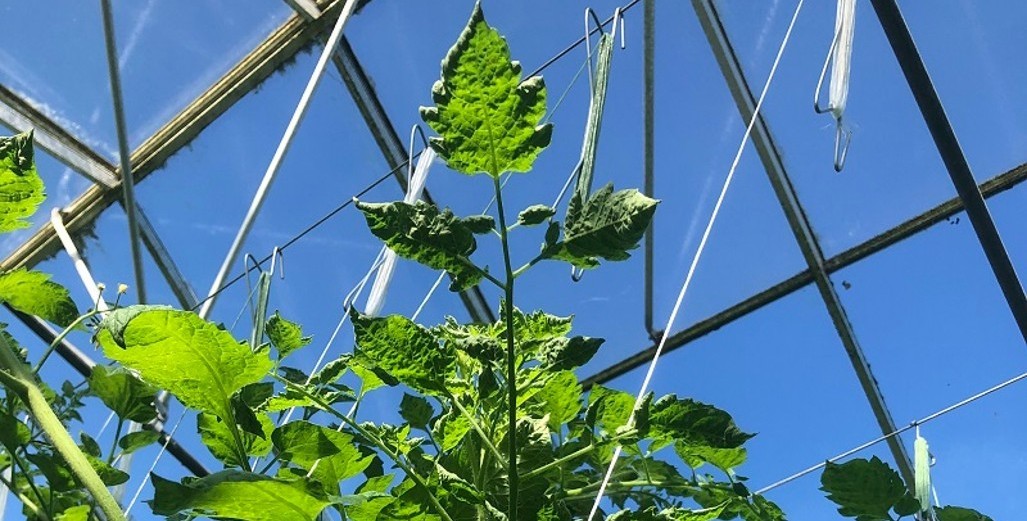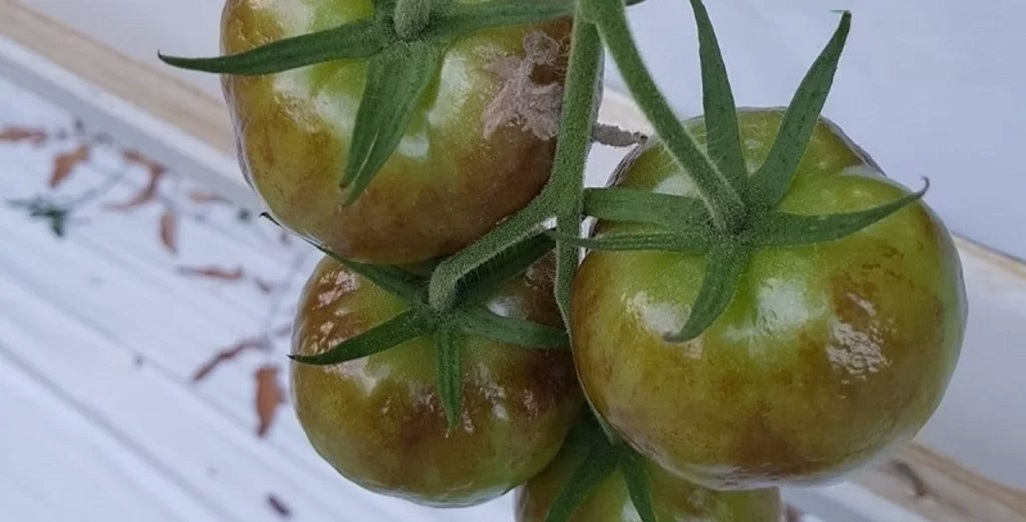Sign up here to subscribe to the Grower2grower Ezine. Every two weeks you will receive new articles, specific to the protected cropping industry, informing you of industry news and events straight to your inbox.
Jun 2021
BEST of 2021 – Tomato PepMV Requires Strict Hygiene Protocols

Suppliers and Growers must work together
Best of 2021: This was the most read artcle of 2021
As many tomato growers are aware – we have had several positive detections of Pepino Mosaic Virus (PepMV). The virus identified in NZ falls into the CH2 strain classification. The area currently effected is the South Auckland region. The first point to note is that any greenhouse property, that tests positive for PepMV, is still able to supply the market, infected tomato growers have NOT been shut down. The fruit is perfectly safe to eat.
Industry, Biosecurity NZ (MPI) were initially looking at an ‘Eradication’ strategy since the first detection – as the PepMV has spread, and eradication is no longer feasible, the response will move to a ‘Long Term Management’ strategy. As we have tomato growers spread throughout NZ it is possible to restrict the spread. However, this is going to rely on a lot of vigorous protocols, good management and like our Covid response…. some good luck.
Prevention:
In my opinion the most important objective for growers is to be vigilant and to increase hygiene measures to reduce the risk of introducing the virus.
While on the Isle of Wight, for Wight Salads in 2007, I worked in an area of the property that had ten individual greenhouses. Two of these greenhouses had PepMV. By using STRICT hygiene protocols, it was contained to those two greenhouses for the period of time I worked there.
One major way to reduce possible spread of PepMV, that is part of the advice below, but I would like to stress is not to share crates, pallets, boxes etc. with other operations. If possible, I would encourage you to use a separate set of crates for picking that only stay on your property and then use another set of crates to pack into for the market. I understand it will be difficult to not mix these crates up. Crates and pallets supplied to your operation, that are in circulation, may accidentally have organic material containing the PepMV. This is a huge concern as pallets, unlike crates, are not washed so this poses an extremely high risk of spreading the virus.
Below are exactly the types of protocols that were used at Wight Salads;
Steps to take at first detection of disease:
- Block off and mark row(s) in which the infected plant or plants were found.
- Enter row, properly suited with coveralls, boots, and gloves, taking care not to touch any plants while walking along the row.
- Remove plant(s) showing symptoms, taking care not to allow contact of the infected plant with adjacent plants, and place in sturdy garbage bag(s).
- Additionally, remove about 3-6 plants (minimum of 20 plants recommended in Europe) on either side of the plant(s) exhibiting symptoms, and place carefully in garbage bags. (note if too many plants in the house are infected then it becomes a ‘wait and see’ to the severity of the strain and damage it causes)
- Walk out of row, taking care not to touch other plants.
- Keep plants in garbage bags and ensure that the plant material does not puncture the bags or containers.
- Burn or deeply bury the infected material, or take immediately to the landfill site. Never dump infected plant material in the open field or leave to be incorporated into the soil in fields. (That is close to your greenhouse where it could be transferred by birds or bees back into your greenhouse the following season or into other greenhouses located nearby)
- Ideally, replace growing media and string in areas from which infected plants were removed, and replace or disinfect drip stakes.
Visitors:
- Have foot-baths filled with fresh disinfectant at every entrance into the operation for disinfection of footwear.
- Disinfect hands using disinfectant dispensers strategically located at all entrances.
- Put on coveralls, disposable boots and gloves.
- Stay in walkways and do not enter the crop.
- When leaving, dispose of boots and gloves into bin specially provided for this purpose.
- Ensure that the used coveralls are laundered before the next use.
- Prevent pets from wandering into the cropping area.
- If this virus is detected in the crop, alert all visitors to its presence and its ease of transmission to avoid inadvertent spread of the disease.
Workers:
- Assign workers, coveralls, tools, carts etc. to greenhouse sections to minimize transfer of the virus between sections. In the case of disease detection, assignment of coveralls, carts etc. to diseased areas is particularly important. At the very least, have shoes/boots and coveralls for each greenhouse area that has been partitioned from the rest of the greenhouse, as might occur in large operations.
- Always work in infected areas last and then leave the greenhouse. Alternatively, shower and change entire work gear before entering uninfected areas again during the same day.
- Dip tools and gloved hands in undiluted skim milk or virucidal disinfectant (Virkon) between every plant. The skim milk should contain at least 3.5% protein, and as soon as the milk starts to go sour, or curdles, replace with fresh milk.
- If knives are used, use a different knife for each row and still disinfect (Virkon) or dip in skim milk between plants.
- After leaving each greenhouse, properly discard disposable gloves and boots, leave shoes/boots for disinfecting, and leave coveralls for laundering and disinfecting.
- Ensure all workers are made aware of the symptoms and that they are instructed to alert the management at first sign of disease symptoms.
- Discourage workers from consuming tomatoes on the premises to avoid inadvertent handling or careless disposal of diseased fruit.
Crates, Carts & Packing:
- Install disinfecting mats at entrances for wheels of carts and forklifts.
- Restrict carts and crates used in infected areas to those areas.
- Do not move carts and crates from infected to non-infected areas.
- Do not share carts, crates, boxes etc. with other operations.
- Tomatoes from external sources for re-packing should not be handled at a site that also produces tomatoes. Such a practice could greatly increase chances of virus transmission to the crop in production.
- Dispose of all rejected tomatoes in a manner similar to that described for plant debris i.e. buried or taken to the landfill immediately.
- Workers in the packing area should preferably not work in production areas also. Where this is unavoidable, workers should always disinfect hands and wear gloves, put on clean coveralls, and disinfect shoes before moving to the production area.
Cultural Practices:
- Do not allow plant debris from de-leafing and de-suckering jobs to be dropped or left on the floor. Remove all plant debris to be burnt, buried, or taken to the landfill.
- Ensure that irrigation water and re-circulated water is disinfected.
- Do not leave trash piles in, or near the greenhouse. Infected plant material can be blown back into the greenhouse, or could be carried on feet and tires.
- Do not keep ornamentals, hobby plants, etc. in the greenhouse. These may serve as hosts for the virus.
Production and Quality losses:
There have been international studies with the losses in production and the fruit quality issues caused by different strains of PepMV. However, we need to be cautious with the results from previous research carried out in Europe. As we grow crops that are harvesting into and through the winter, we may find in our climate those figures are not representative of the outcomes that may occur in NZ. It should be a priority to start collecting figures so as an industry we understand the impacts on crop production and quality issues as it will assist in the establishment for a long-term management strategy.
The Possibility of a Vaccine:
If I receive more information, I will post in an upcoming issue of Grower2Grower, any future possibility of importing a biological vaccine into NZ. We may require the type of vaccine available in Europe to combat PepMV or we may not, but it is imperative we understand more about as many potential control options moving forward and if they could be approved for use in NZ.
Symptoms:
Note that on young plants you may not notice the virus. However, on older crops or crops with a full fruit load you will most likely notice the effects at this stage if your plants are infected.
Fruit may become blotchy
Leaf will almost look like it has hormone damage. Leaves can be dark and hard looking.
Please contact me directly if you have any questions or require additional advice.
E: stefan@grower2grower.co.nz
Article written and compiled by Stefan Vogrincic
All Article’s checked and edited by Marie Vogrincic
I appreciate your comments. Please feel free to comment on the grower2grower Facebook page:
https://www.facebook.com/StefanGrower2grower/
CLASSIFIED
Subscribe to our E-Zine
More
From This Category

TNZ Mini Conference August 2024

MPI – decision to temporarily suspend all Imported Australian fresh Tomatoes the correct one.

Plant & Food Research welcomes changes to gene technology regulations

Tomato grower applies Tobre after contamination

KWS inaugurates new R&D facility in Uberlândia, Brazil

























